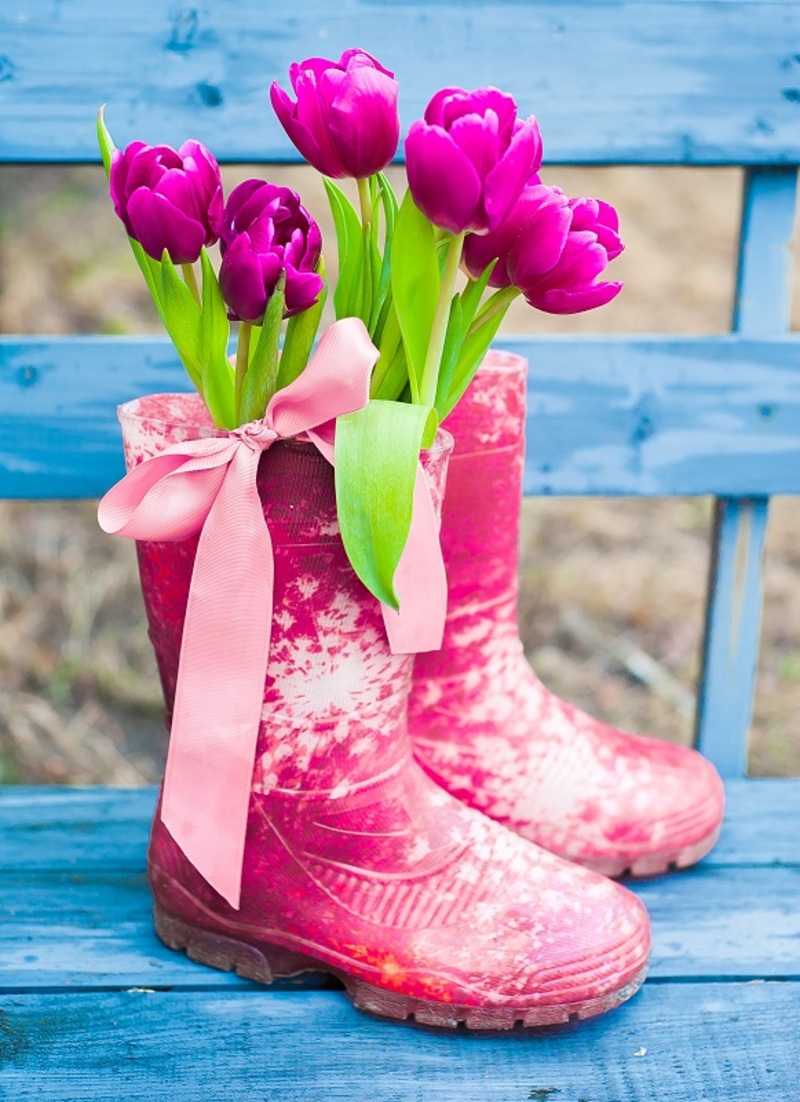3 Quick and Easy Techniques for Flower Preservation
Posted on 13/08/2025
3 Quick and Easy Techniques for Flower Preservation
Flowers capture the essence of beauty and emotion in a single bloom. Whether it is a bouquet from a loved one, a corsage from your prom, or wildflowers picked during a memorable hike, preserving these floral mementos allows you to cherish the memories for years to come. Flower preservation doesn't have to be complicated or time-consuming. In fact, there are several quick and easy methods that anyone can try at home. This comprehensive guide outlines the most effective, beginner-friendly techniques for flower preservation that yield stunning, lasting results.

Why Preserve Flowers?
Flowers are naturally perishable, but with the right flower saving techniques, you can capture their beauty forever. Some motivations for preserving flowers include:
- Sentimental Value: Keep a token from special events like weddings, graduations, or birthdays.
- Home Decor: Create unique decorations using preserved blooms.
- Creative Projects: Use dried or pressed flowers in scrapbooking, art, or jewelry.
- Eco-Friendly Gifting: Preserved flowers are sustainable and long-lasting gifts.
Read on to discover the top easy ways to preserve flowers at home without specialized equipment or expertise.
1. Pressing Flowers: A Timeless Classic
Overview
Flower pressing is one of the oldest and most widely loved techniques for preserving flowers. It involves flattening blooms between the pages of a heavy book or between dedicated press boards, allowing them to dry while maintaining their color and shape in two dimensions. Pressed flowers can be framed, used in crafts, or added to greeting cards.
Best Flowers for Pressing
- Daisies
- Pansies
- Lavender
- Violets
- Fern leaves
Step-by-Step Process for Pressing Flowers
- Choose Your Flowers: Pick fresh, pesticide-free blooms in the morning after dew has evaporated. Avoid thick, fleshy flowers as they may rot or mold during the process.
- Prepare Flowers: Remove excess stems and leaves. Pat the flowers gently with a paper towel to eliminate moisture.
- Arrange the Blooms: Place flowers face-down on parchment or blotting paper. Arrange petals and leaves as desired since they will retain this position after pressing.
- Press Flowers: Sandwich the prepared flowers between sheets of paper and place inside a heavy book. Add more weight (such as additional books) on top for extra pressure.
- Wait: Leave flowers undisturbed for 1-2 weeks. For thicker flowers, allow up to 3 weeks.
- Check and Store: Carefully remove pressed flowers. Store in a dry, cool place or mount for display.
Tips for Best Results
- Change blotting paper with fresh, dry paper every few days to prevent mold.
- Arrange petals with tweezers for more detailed designs.
- Use archival-quality paper for longevity if making keepsakes.
2. Silica Gel Drying: Fast and Effective
Overview
If you wish to retain the three-dimensional shape and vibrant color of your flowers, silica gel flower preservation is the ideal technique. Silica gel crystals draw out moisture quickly, resulting in beautifully preserved blossoms that look almost as fresh as the day they were picked.
Best Flowers for Silica Gel Drying
- Roses
- Dahlias
- Zinnias
- Orchids
- Chrysanthemums
How to Dry Flowers Using Silica Gel
- Assemble Materials:
- Silica gel crystals (available at craft stores or online)
- Airtight container (plastic or glass)
- Fresh, pesticide-free flowers
- Scissors and tweezers
- Trim Flowers: Cut stems to about 1-2 inches below the bloom. Remove damaged petals and leaves.
- Prepare the Container: Pour an inch of silica gel in the bottom of the container.
- Place Flowers: Gently insert flowers upright in the silica gel, ensuring space between blooms. Pour additional silica gel over the flowers, ensuring all parts are covered but not crushed.
- Seal and Wait: Close the container tightly and store in a dry place. Most flowers need 3-7 days, but larger or denser blooms may need longer.
- Remove and Clean: Gently remove flowers using tweezers. Brush off excess silica gel with a soft paintbrush.
Expert Tips for Silica Gel Flower Preservation
- Wear gloves and avoid inhaling silica gel dust for safety.
- Label your container with the date for tracking.
- Reuse silica gel after drying it in an oven, following package instructions.
- Spray preserved flowers with clear acrylic spray for added strength and shine.
3. Air Drying: The Simplest Flower Preservation Method
Overview
Air drying flowers is a traditional and very simple flower preservation technique. Although it takes a bit longer than the other methods, it requires virtually no special supplies and can be applied to a wide variety of blooms and foliage. Air-dried flowers make lovely rustic bouquets, wreaths, and arrangements that last for months or even years.
Best Flowers for Air Drying
- Hydrangeas
- Statice
- Roses
- Lavender
- Baby's breath
- Eucalyptus
How to Air Dry Flowers at Home
- Bundle the Flowers: Gather flowers into small bunches and remove excess leaves from the stems.
- Secure with String: Tie the stems together tightly using twine, rubber bands, or string.
- Hang Upside Down: Hang the flower bunches upside down in a dark, dry, and well-ventilated space. Closets, attics, or unused rooms work perfectly.
- Wait Patiently: Flowers will take between 1 and 4 weeks to dry completely. Check periodically for dryness.
- Finishing Touches: Once dry, spray lightly with hairspray or floral sealant to help reduce shedding and increase longevity.
Air Drying Tips for Success
- Choose flowers at their peak bloom for best color and shape.
- Keep bunches small to ensure even drying and prevent mold formation.
- Ensure good air circulation around each bunch to avoid dampness.
- Use dried flowers in vases, wreaths, or as unique gifts.
Maintaining and Displaying Preserved Flowers
No matter which quick and easy flower preservation method you choose, maintaining your preserved flowers correctly will keep them looking lovely for longer:
- Keep out of Direct Sunlight: Sun will fade colors over time.
- Avoid Excess Humidity: Moisture can cause mold or brittle petals.
- Dust Gently: Use a soft brush or hairdryer on cool setting to remove dust.
- Display Creatively: Frame pressed blooms, design shadow boxes, include dried flowers in art, or incorporate preserved flowers into handmade cards and resin jewelry.
Creative Uses for Preserved Flowers
- Wall Art: Frame pressed or preserved flowers for natural, boho-chic wall decor.
- Jewelry: Embed tiny dried blooms in resin for wearable keepsakes such as pendants and earrings.
- Stationery: Decorate personalized cards, invitations, or bookmarks with pressed flowers.
- Eco-Gifts: Present loved ones with bouquets or wreaths made from your preserved favorites.
- Candle Making: Incorporate dried flowers into homemade candles for aesthetic appeal and subtle fragrance.
- Table Centerpieces: Use air-dried arrangements or silica-dried blossoms to create centerpieces that will last for seasons, not days.

Common Questions About Flower Preservation
1. Which flowers last the longest after preservation?
Flowers with low moisture content, strong petals, and sturdy stems--such as roses, daisies, lavender, hydrangeas, and statice--usually last the longest. Using a protective spray can further extend their life.
2. How do I prevent colors from fading?
The best way to keep colors vibrant is to store preserved flowers away from direct sunlight and high humidity. Silica gel drying is effective at maintaining natural color.
3. Can preserved flowers be scented?
Yes! Add a few drops of essential oil to the preservation process or use scented sprays to enhance or refresh the fragrance of your preserved flowers.
4. Are preserved flowers eco-friendly?
Preserved flowers are a sustainable choice compared to artificial blooms or frequently purchasing fresh cut flowers, as they can be enjoyed for years and require no water or pesticides.
Conclusion: Cherish Your Blooms with Quick and Easy Flower Preservation Techniques
Whether you prefer the simple elegance of pressed flowers, the vivid shapes retained by silica gel, or the nostalgic charm of air-dried bouquets, mastering these three quick and easy flower preservation techniques will help you immortalize your favorite blossoms for any occasion. With only basic supplies and a little patience, you can transform fresh blooms into stunning, lasting memories. Get creative with your projects and enjoy the art of flower preservation from your home!
Explore different preservation methods, experiment with floral combinations, and share your preserved masterpieces with friends and family. For more tips and creative inspiration on preserving flowers, check out our related articles and guides!
Latest Posts
Whimsical Blooms to Elevate Birthday Celebrations
3 Quick and Easy Techniques for Flower Preservation
Flowers Flourish Well-Being: The Mood-Lifting Benefits of Blooms





